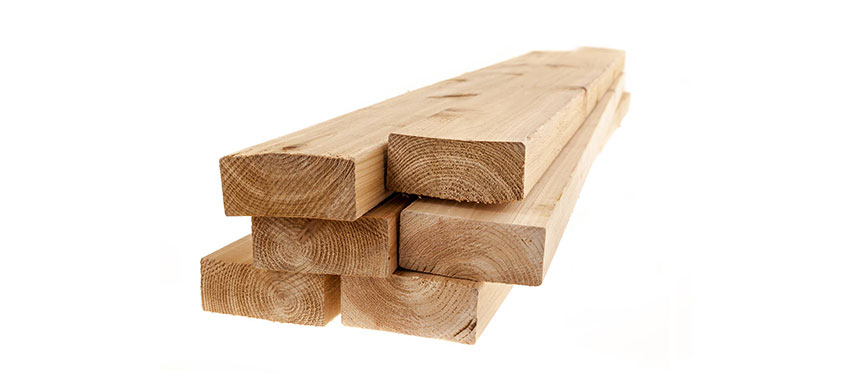
When you’re standing in the lumber aisle at the hardware store or browsing online for wood supplies, the options can feel overwhelming. I remember my first time trying to pick out lumber for a bookshelf project – I had no idea why some boards cost twice as much as others or which type would actually hold up over time.
After years of working with wood in construction and furniture-making, I’ve learned that choosing lumber isn’t just about grabbing whatever’s cheapest. The right wood can make the difference between a wobbly table that lasts a season and a solid piece that becomes a family heirloom.
Getting to Know Your Lumber: It’s More Than Just “Wood”
Let’s start with the basics. All lumber falls into three main categories, and understanding these will help you make smarter choices:
1. Softwoods: The Workhorses of Construction
These come from fast-growing evergreen trees like pine, spruce, and cedar. They’re what most people picture when they think of construction lumber – those familiar pale yellow boards at every hardware store.
What I love about softwoods:
- They’re affordable (perfect when you’re building a deck or framing a wall)
- Easy to cut and work with (great for beginners)
- Lighter weight makes them easier to handle
But they have limitations. I learned this the hard way when I used untreated pine for outdoor planters – they started rotting after one rainy season. That’s when I discovered…
2. Hardwoods: Where Beauty Meets Durability
These come from slower-growing deciduous trees like oak, maple, and walnut. Walking through a hardwood supplier is like being in a candy store – the rich colors and grain patterns are stunning.
Why hardwoods are worth the extra cost:
- They last decades (my oak dining table is 20 years old and barely scratched)
- The natural beauty needs no paint (just a clear finish)
- They handle wear better (perfect for floors or tabletops)
Pro tip: Don’t be intimidated by the price. For small projects, the extra cost is minimal, and the results are so much nicer.
3. Engineered Wood: The Smart Modern Option
This is where things get interesting. Products like plywood, LVL (laminated veneer lumber), and OSB aren’t “fake wood” – they’re often smarter choices for specific uses.
My go-to engineered woods:
- Plywood for cabinet backs (it stays flat when solid wood might warp)
- LVL beams when I need long spans without sagging
- MDF for painted projects (it gives that perfectly smooth finish)
Matching Wood to Your Project
Here’s where many beginners go wrong – using the wrong type of wood for the job. Let me share some real-world examples:
Building a Deck?
- Best choice: Pressure-treated pine or cedar
- Why? They resist rot and insects
- Mistake to avoid: Using untreated wood (it won’t last)
Making a Coffee Table?
- Best choice: Oak, maple, or walnut
- Why? They can take daily abuse and look better with age
- Mistake to avoid: Using construction-grade pine (it dents too easily)
Framing a Wall?
- Best choice: Standard spruce or fir
- Why? It’s strong enough and cost-effective
- Mistake to avoid: Using expensive hardwoods (total overkill)
Shopping Smart: What the Grades Really Mean
The first time I saw “No. 2 Pine” on a price tag, I had no idea what that meant. Here’s the simple breakdown:
- Select Grade: Nearly perfect, few knots (great for furniture)
- No. 1 Common: Some small knots (good for painting)
- No. 2 Common: More knots (fine for structural work where looks don’t matter)
A little secret? For many projects, No. 2 is perfectly fine and saves money. I use it for workshop shelves and hidden framing all the time.
The Moisture Factor: Why It Matters
Early in my woodworking journey, I built a beautiful oak cabinet… that developed huge cracks two months later. The culprit? I used wood that was too wet.
Now I always:
- Look for KD (kiln-dried) stamp
- Check moisture with a meter if possible
- Let wood acclimate to my shop for a few days
Sustainability: Good for the Planet, Good for Your Conscience
When I learned about deforestation issues, I started seeking out FSC-certified lumber. It might cost 10-15% more, but:
- It ensures responsible forestry
- Often comes from better-managed forests
- Gives you bragging rights on eco-friendly projects
Where to Buy Lumbers: My Personal Tips
After buying wood from everywhere from big-box stores to specialty mills, here’s what I’ve found:
- For small projects: Local hardware stores are convenient
- For bulk purchases: Wholesale lumber yards save serious money
- For specialty woods: Online suppliers offer amazing variety
One of my favorite discoveries was finding a local sawmill that sells “rough cut” lumber. It takes more work to plane it smooth, but the character and savings are incredible.
Final Thoughts: Start Simple, Learn as You Go
If you’re just starting out, don’t stress about knowing everything. My advice:
- Pick one simple project
- Use the recommended wood type
- Learn from the experience
Remember, every master woodworker started exactly where you are now. The important thing is to begin – your skills (and your lumber knowledge) will grow with each project.
Ready to get started? Check out our lumber selection and find the perfect wood for your next creation. Happy building!